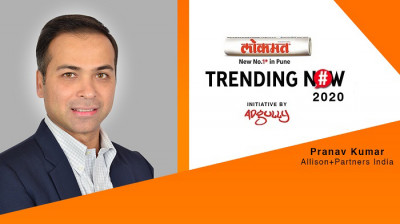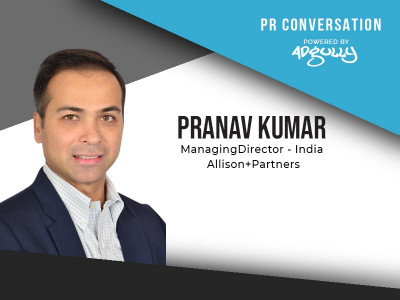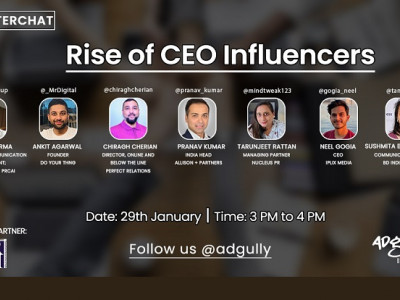PR needs to step its digital storytelling game: Pranav Kumar, Allison+Partners
Pranav Kumar, MD, Allison+Partners India, shares his insights on how the PR industry has been evolving in an increasingly challenging market ecosystem. Looking forward, Kumar gives his take on the emerging trends in the communications industry in 2020, the digital transformation in PR and more.
What were the few big changes that you think were of importance in 2019 for our industry?
Hyper-news, hyper-information: The immediacy of everything – whether news, information, or misinformation – means that building and preserving reputation took centerstage in 2019. This remains at the core of the public relations industry and is not going to change for the foreseeable future.
Changing environment and consumer empowerment: The environment that brands operate in today is volatile and continues to see fundamental shifts. Consumer empowerment, increasing expectations from brands to uphold values, demonstrate integrity, and impact communities positively places an ever more strategic role for the communications function.
The need for ‘Spokes-stars’: A corollary to the above is the recognition by companies on the new demands being placed on their spokespeople to project and protect business reputation. The CEO’s role is increasingly public and getting them primed continues to be area of focus.
Clutter: Driving ‘earned’ media outcomes continued to become challenging with increasing clutter, reducing editorial avenues and increasing paid media instances. That only meant a greater emphasis on data-driven insights and in creating compelling story lines to truly stand out.
Content is everything: Content and its many manifestations become even more intrinsic in our world, becoming the basic building block for any brand or thought leadership campaign. Deploying, seeding, amplifying, channelling, or syndicating content continues to evolve with the interplay between paid, promoted and earned blurring. Paid content is no longer taboo in the PR world. It only broadens our role as the vanguard of messaging and storytelling, and we embraced it as an essential campaign arsenal.
What are the big changes you are expecting in 2020?
Communications as a whole will see increasing coherence and strategic importance as the ultimate custodian of brand and corporate reputation. Our skills as communicators – whether messaging or engagement – will be relevant more than ever in the age of waning attention and speed of information.
A few top line changes that I’m expecting in 2020 are:
Re-assessing Influencers: As fast as communities of influencers have risen, there will be greater objectivity on their impact and authenticity. We will see the development of more robust frameworks on influencer qualification to arrive at more accurate ‘influencer scores’ when making campaign decisions. As all trends point to, we will see an exponential rise in the number micro or super niche influencers where numbers and likes are not the game, but resonance is.
Measurement and impact: The greater the pressures on business, the more emphasis on measurement to demonstrate communications’ return-on-investment. Will we get to a point where we can calculate how impressions and brand mentions can lead to sales? Probably not in 2020, but closer, nonetheless. Can we start taking steps to be more entrenched in the client’s customer acquisition cycle and where PR fits in, working that backwards into our campaigns? Yes, we can!
Embracing more tech: Technology investments will need to step-up considering the flux of media platforms, emphasis on measurement and the demands on modern-day communications campaigns. Whether it is analytics platforms or cloud-based tools and resources, we are going to get more adept and equipped. On the other hand, everything related to Artificial Intelligence and its implications for communications is something we will all attempt to understand in 2020.
Increasing specialisation: We will see greater specialisation in communications remits, both from what clients expect and how agencies position themselves. Agencies will continue to expand their service offerings with an increasing mix of value-added services – from brand development to integrated marketing.
How has digital transformation affected the PR business?
The biggest impact of digital disruption is, of course, the breaking down of marketing silos. Anyone who has a great idea and a finger on the pulse of their target audiences can innovate, given the democratisation of everything – from content to publishing and platforms. From a PR perspective, the implications are for us to step up our digital storytelling game. We are born from PR, but with creativity and courage, can take the same very skillsets in engagement, content and in building relevance for brands, to newer marketing frontiers such as creative services, community management to managing owned-brand assets.
What will be the key to managing perceptions in the information age?
Execution rigour is important, especially when it comes to issues and crisis management. It is imperative to intervene or jump into the conversation as quickly as possible before everyone else sets the narrative or misinformation or vitriol starts to perpetuate. Having said that, not all battles are worth fighting for and it is important to judge credibility, relevance, and influence of where or from whom issues are emanating from. Investing in, and understanding, listening tools and being able to suss out insights or trends is critical. Above all, consistency, authenticity, and transparency of communication scores high when managing perceptions in today’s hyper-connected world or when things take the wrong turn for a brand.
Also Read:
Trending Now: Integration to remain the buzz-word this year - Ketan Desai
Trends 2020: Advertisers now eyeing meaningful & outcome-based media









Share
Facebook
YouTube
Tweet
Twitter
LinkedIn